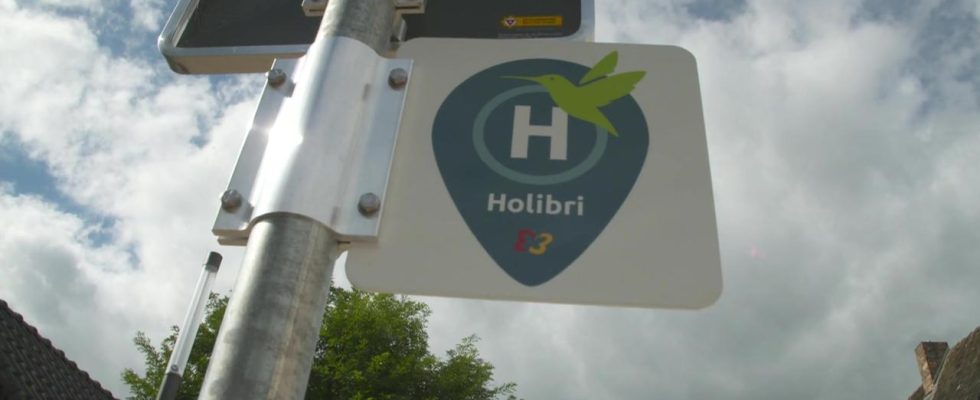In the middle
Local transport in rural areas is usually not very attractive. Municipalities like Höxter are now testing on-call bus systems – with success. A future model for public transport?
In the past, they would have had to walk several hundred meters to the next stop and then, if in doubt, wait an hour for the next bus, says pensioner Silvia Knappe.
The “Holibri” has changed her life and that of her husband, who is in a wheelchair, for the better. “It’s just the perfect fit, we’re grateful that it exists,” she says.
Passenger numbers almost tripled
Just two years ago there were five city bus routes in the town of Höxter, which has a population of 30,000. With the exception of school hours, the buses drove almost empty through the extensive, rural urban area, as Marcus Klugmann, managing director of the Paderborn/Höxter local transport association, describes it.
So they dared to experiment in Höxter. With the help of grants from the state of North Rhine-Westphalia – 1.5 million euros spread over three years – they developed an on-demand bus system, the “Holibri”. Five fully electric minibuses have replaced four of the former five city bus routes since December 2021.
For Silvia Knappe and her husband, the bus is a real improvement.
There is no longer a timetable; customers book their trips via app or by telephone. You pay the normal Westphalia tariff or use your Germany ticket. The “Holibri” stops at 1,300 stops, if there are multiple bookings at the same time, trips are combined using an algorithm.
Since the on-demand service was introduced, the number of passengers in Höxter has almost tripled, says Marcus Klugmann. “We are now at around 6,500 passengers per month. That is a number that we could not have expected. And we are very, very pleased that it has become so established.”
More than 80 on-demand projects throughout Germany
And they are not alone in Höxter with their idea. While there were only a handful of such on-demand projects in Germany in 2019, according to the Association of German Transport Companies (VDV), there are now more than 80. They are intended to bring public mobility to places where there was often none before, i.e. to rural areas . However, most of the minibuses that can be booked via the app were started as additional pilot projects. “There is a lack of a sustainable financing basis for regular operations – exacerbated by the cost situation for personnel, energy, fuel and materials,” said VDV Vice President Werner Overkamp.
The “Holibri” in Höxter is also a pilot project limited to three years. The subsidies from the state of North Rhine-Westphalia will expire at the end of 2024, and the municipality will then have to cover local transport services itself.
In the Höxter city council they are in favor of continuing with the “Holibri” and are hoping for further funding from the state. Because of the higher personnel costs and the great flexibility of the offer, the “Holibri” costs more to operate than the four city bus routes that Höxter has discontinued. These are additional costs that the municipality would otherwise have to cover itself – and which cannot be offset by the higher number of passengers.
Future model or too expensive?
Are on-demand solutions a form of mobility that is too expensive and too individual to work long-term? It is an argument that mobility consultant and transport activist Katja Diehl does not accept. “Instead of asking: how much does it cost, we should ask ourselves what good local transport is worth to us. For example, we could think about a kind of mobility contribution for Germany that would finance such offers,” says Katja Diehl. Countries like Switzerland have shown that it can be done.
“We have invested an incredible amount of money in the car infrastructure in Germany, no one questions that because we are used to it being that way,” says Diehl. She believes the on-demand bus projects are the right way to make local transport in rural areas attractive in the long term. A project she supervised, the “sprinti” in the Hanover region, also showed that people are very willing to leave their cars behind if the bus and train connections are suitable.

